Rockport Technologies is a company with origins that date back to 1990, when they released their first audiophile component, a reference phonograph named the Sirius. Phonographs live and die by how well the designer can isolate and control vibration to retrieve the most subtle bits of musical information from the recording. On the other hand, high-performance loudspeakers work inversely, requiring ultra-inert materials that absorb as little energy as possible, so that the drivers can reproduce those subtleties. It’s obvious that phonographs and large-format audiophile loudspeakers can share technologies, which is exactly what Rockport did when they ventured into loudspeaker design three years later with the Procyon.
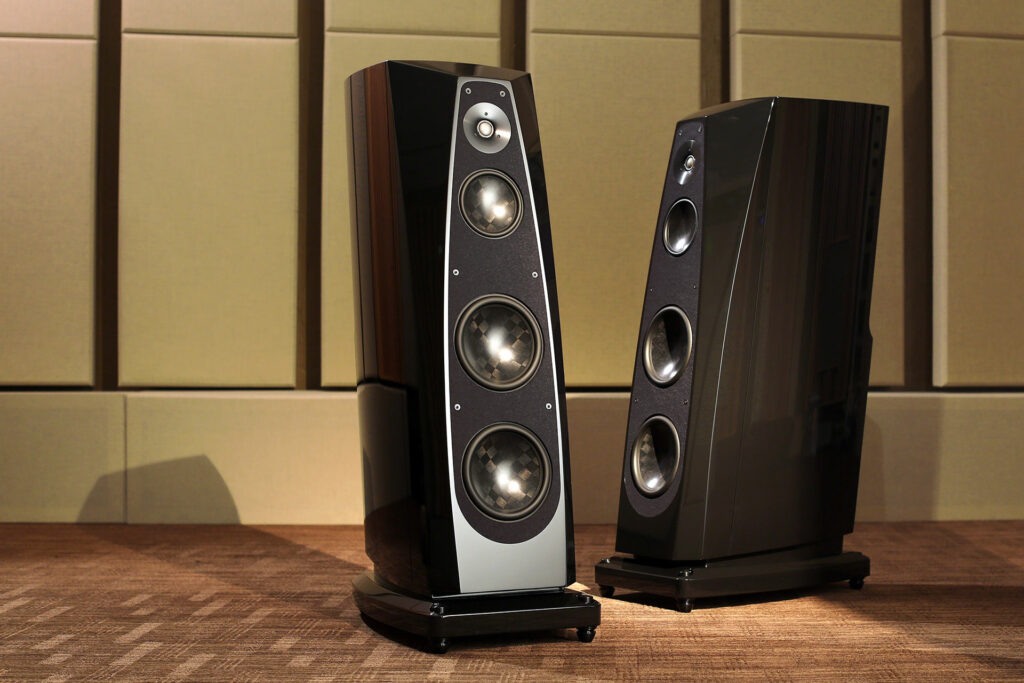
Fast-forward to today, and you will only find five loudspeakers on the Rockport product list, ranging from the entry-level Atria II for $38,000 to the top-of-the-line Lyra, priced at an eye-watering $205,000. As you progress up the Rockport food chain, you will find that nearly all the speakers share the same Rockport-designed drivers. High frequencies are handled by a proprietary one-inch waveguide-mounted beryllium tweeter. Midrange and bass drivers are advanced carbon fiber cones that offer best in class stiffness-to-weight ratios, being ultra-responsive with minimal distortion.
So, what does this level of loudspeaker investment get you? The big draw is more advanced cabinets, which are stiffer and more inert. The top-of-the-line Rockport Lyra has an enclosure comprised of an aluminum casting that is inserted into the outer enclosure, with gaps filled with a high-density damping compound that locks the two sections together. Weight? They hit the scales at 560 pounds each, which is mainly because of the robust cabinets.
The Rockport Avior II loudspeaker that is under review is one step up from the entry-level Atria II, and is priced at $47,000 per pair. The Avior II a three-way ported design using a single tweeter, a six-inch midrange and a pair of nine-inch woofers.
What Makes the Rockport Avior II Loudspeakers So Special?
- The Avior II is a full-range speaker that is designed to thrive in average homes. While the Rockport Avior II isn’t what I would consider a small speaker, it is designed to fit in almost any normal-sized living room. This is a huge advantage for those who don’t have a dedicated listening room, but still want high performance. Moreover, the Rockport also has a shape that is elegant yet muscular and most significant others will accept. Viewed from the side, the speaker has a subtle backwards tilt that is much more interesting than a standard rectangular cabinet. The front of the speaker has graceful curves that blend to the small baffle area where the drivers are located. These speakers are gorgeous, especially with the grilles removed, when you can see those sexy-looking carbon fiber drivers.
- The Rockport Avior II deliver next-level build quality, even at their stout pricing. The fit and finish of the Rockport Avior II is absolutely topnotch. The gloss black paint is flawless, as is the enclosure construction. The rear of the speaker has a beautiful machined aluminum panel, which holds sturdy binding posts that accept both spade and banana connectors. The rear port is made of the same machined aluminum. Carpet spikes are not something that I typically get excited over, but Rockport includes some of the nicest I’ve ever seen. Finally, the grilles that are include are very well-built and actually provide real protection to the drivers. While most may not use them, I can attest, as someone with a four-year-old, that these are fantastic and greatly appreciated to protect my investment.
- Custom-designed drivers built to Rockport specifications are used, not off-the-shelf drivers. The majority of audiophile speakers, even high-end units, use off-the-shelf drivers. While there are many excellent speakers using these drivers, having them built to your exact specifications is better. Rockport uses exotic materials and custom manufacturing processes that you just can’t find elsewhere.
- Rockport builds incredible enclosures for maximum performance. There are only a few speaker manufacturers who put as much effort into their enclosures as Rockport does. From advanced designs to cutting-edge materials, Andy Payor, Rockport founder and chief designer, leaves no stone unturned to wring out every drop of performance from his products. Give the speaker the knuckle rap test and you will understand how inert these are.
- Rockport customizes every crossover before the speakers are finished. Every component (resistor, capacitor and inductor) that goes into a crossover has a tolerance rating, meaning no two units are exactly alike. This is also true of every driver that is manufactured. What most speaker manufacturers do is design a crossover circuit assuming everything is exactly the same and hope for the best. Rockport and a few other manufacturers go a step further and fine-tune each crossover to the drivers that are in the speaker. They listen to every speaker they build, and tweak the crossover components until it sounds just right.
Why Should You Care About the Rockport Avior II Loudspeakers?
If you are considering the Rockport Avior II loudspeakers, then you care about quality, design and performance, and you are at a stage in life (as well as the audiophile hobby) where you are willing to pay for it. You prefer hand-craftsmanship and attention to detail over mass production. In terms of industrial design, you prefer stealth over bling. You also have invested in other high-performance electronics and want to get the most from them.
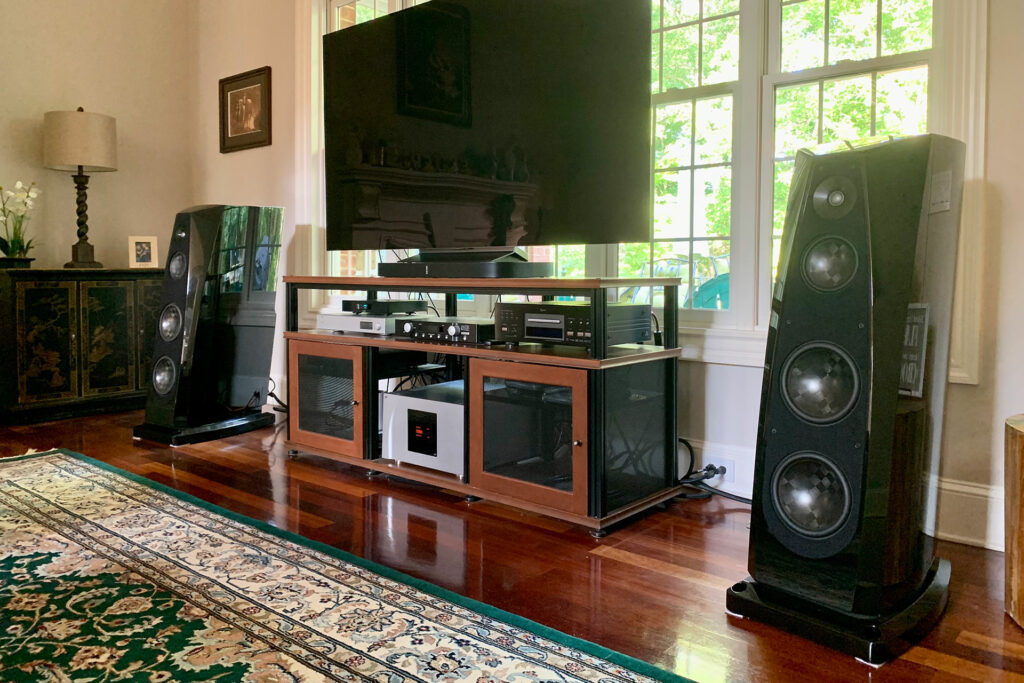
Some Things You Might Not Like About the Rockport Avior II Loudspeaker
- These are rear-ported speakers, so physical placement is important to their sound in your specific room. I have had experience with other rear-ported speakers and found that they had to be placed well away from the rear wall for acceptable bass performance. While it is not recommended that the Avior II be placed closer than 12 inches to the rear wall, I found that it was not a problem at all to accommodate. If space is really limited, this may be a concern.
- Each Rockport Avior II speaker is heavy. As mentioned previously, Rockport is serious about their enclosures, which pays huge dividends in performance, but the downside is that they are heavy. Each Avior II weighs 220 pounds, so care, and help is needed to unbox, place and fine-tune them in your room. This is not a one-person job.
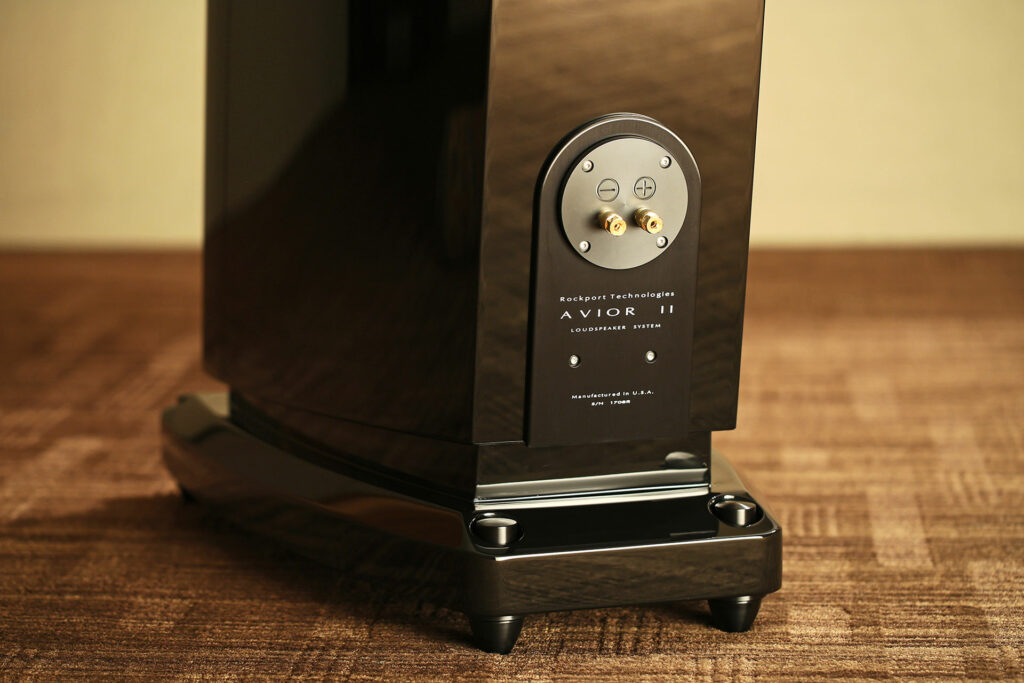
Listening to the Rockport Avior II Loudspeakers …
My current system consists of a Lumin U1 mini streamer, Weiss Helios DAC/Preamp, and a CH Precision M1.1 stereo amplifier.
Eric Clapton has many songs which I use as a reference, so to get a new version of them in a live setting makes me very happy. To Save a Child: An Intimate Live Concert was recorded in London at the end of 2023, and captures Clapton at perhaps his best. Hearing this version of “Layla” through the Avior IIs was nothing less than jaw-dropping. The speakers presented a soundstage that was as densely packed as I’ve ever experienced. It extended well outside the speakers horizontally and vertically, but even more impressive was the depth that was created. It started well behind the speakers, wrapped around the sides of my room, and continued behind me. The images were firmly anchored in space, allowing me to easily visualize the stage layout. This is the most magical aspect of a truly high-end system in my opinion. It lets the listener recreate any performance and venue without having to leave home. The guitarwork that Slowhand is known for was crystal clear and packed with rich harmonics and subtle details that put you in the audience. Sometimes speakers that are highly revealing do so at the expense of musicality; not so with the Rockports. The design team was able to voice the beryllium tweeters, which I typically avoid because they can sound harsh, and made them sound simply magical. The bass and kickdrum laid a solid foundation that the Avior IIs presented beautifully. The twin nine-inch drivers produce low and visceral bass that I could not fault. Typically, I find myself yearning for a little very low-end response from even larger floorstanding loudspeakers, but not with the Rockport Avior IIs. Bass was punchy, articulated and just right. Vocals were also just outstanding on this track.
Next up was the Paul Simon classic “50 Ways to Leave Your Lover” from his 1975 release Still Crazy After All These Years. This song is instantly recognizable from the unique groove created by drumming phenom Steve Gadd. It’s one of those songs that just gets your body moving. Simon’s vocals were front and center, full of nuance and feeling. The song alternates from a somber, almost funereal feel to full funk that screams 1970s in a positive way. The Rockport Avior IIs took me back to the countless times I heard this song as a kid. I could go on about how amazing the funky bass line sounded or how tight the snare was on Steve Gadd’s drum kit, which were both outstanding. However, I’d rather focus on how seamlessly the individual musical elements come together to deliver a wonderful listening experience. If you’d like to put each instrument under a microscope, the Rockports will let you dial up the image as much as you want with absolute clarity, but making music is what the Avior IIs are all about. They knocked it out of the park.
Now I shift gears slightly from Paul Simon to something a little more aggressive, like AC/DC. I mean what good are speakers if they can’t rock? “Ride On” from the 1976 release Dirty Deeds Done Dirt Cheap is a bluesy track that is nearly perfect in my opinion. No, it’s not one of those audiophile recordings that sound good on almost any equipment, but it’s a badass song by an equally badass band that has sold their fair share of records. “Ride On” is the type of song you listen to in a seedy, dimly-lit bar with a glass of your favorite bourbon and a smoldering Marlboro. The type of bar where fights are as common as flat draft beer, and your shoes stick to the floor when you walk. Bon Scott is one of those singers whose voice has all the power of a top fuel dragster, but he also has the versatility to sing in a style that is gentle, almost tender. I realize this may be the first time that the word “tender” and AC/DC have been put together in a sentence, but I stand by my assertion with this specific track. Scott sings this song with a painful honesty that is utterly believable. Angus Young’s minimal lead guitar work is understated but exactly what the song needs: think B.B. King, only better. The dual bass drivers recreated the rhythm section perfectly with power to kick me in the chest, just like I remember when I saw them live back in college. The Rockports never let me forget that this recording was less than perfect, but they also didn’t punish me for it. I always found myself inching the volume a little bit higher, until my wife finally (and rightfully) shut down the sonic fun. Even with this recording, the Avior II’s let me hear new things from this track that I’d listened to a thousand times. For example, a guitar pick inadvertently touching a string during what should be a silent section. A quick breath between vocals. Even dusty old recordings like this sound better through the Avior IIs.
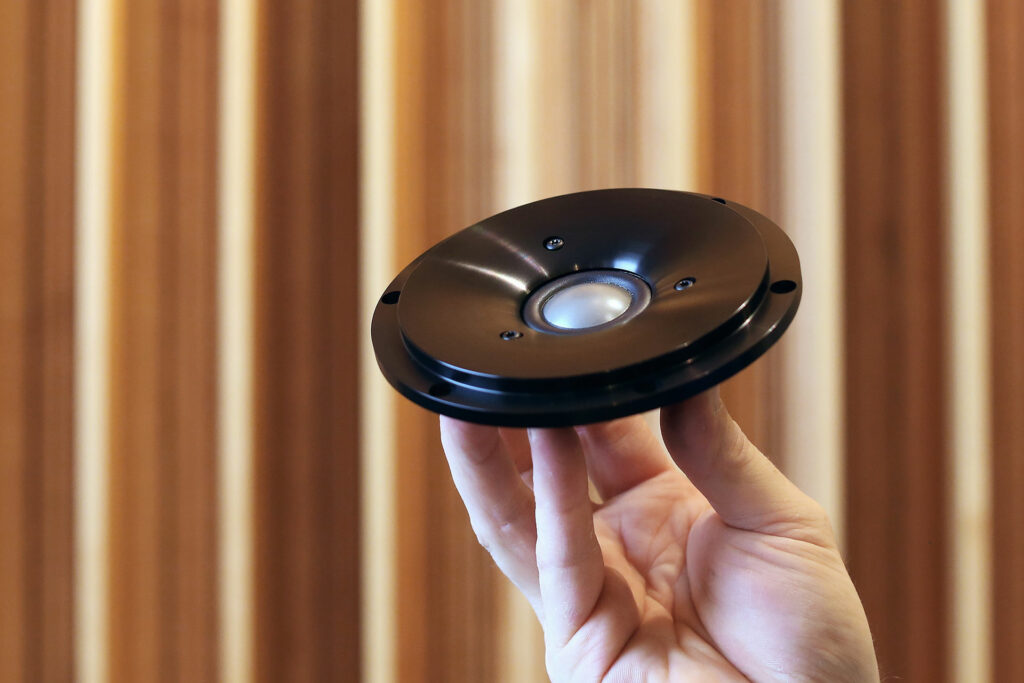
Will the Rockport Avior IIs Hold Their Value?
While Rockport may not have quite the name recognition of Wilson Audio or Bowers & Wilkins, those who are in the know place them near the top of the loudspeaker food chain. They are known for a house sound that offers detail and nuance, while never abandoning musicality. They build speakers that make music at the highest level. The quality is outstanding and they just sound great. People who own Rockport speakers normally only sell them in order to move further up the Rockport product line. The Rockport Avior IIs, while not inexpensive by any means, are a relative value when you cross-shop with other offerings that bring the same level of performance and quality. You rarely see Rockports on the used market, and when you do, they don’t last long before some opportunistic audiophile makes his move.
What is the Competition for the Rockport Avior IIs?
The space where the Avior II lives is hotly contested and ultra-competitive. Think Wilson Audio, Magico, Bowers & Wilkins, Vandersteen and countless other manufacturers who fight for your money.
Let’s start with the Wilson Sasha V, which costs $48,900 per pair. It’s a three-way speaker, using a proprietary one-inch custom carbon-coated silk tweeter, a seven-inch midrange and a pair of ported eight-inch woofers, and weighs in at 245 pounds per speaker. Wilson is likely the most well-known brand of loudspeaker in the high-end audiophile world. They have a long reputation for building ultra-high-resolution speakers built to fanatical standards since they opened their doors 50 years ago. Some of the early Wilson speakers had a reputation to tilt slightly aggressive in higher frequencies in the pursuit of maximum resolution, but that reputation is all but gone. The Wilson house sound is still very detailed and resolving, but not bright or shrill at all. If you attend an audiophile show, you might find Wilson speakers used to showcase the finest electronics available. These include Dan D’Agostino, Audio Research and other ultra-high-end products. The Wilson Sasha V is available in a nearly infinite combination of cabinet and grille covers to match any décor. The styling may be a point of contention with your significant other, since they are designed to stand out and be the center of attention. Again, they aren’t for everyone. Styling aside, if you are shopping at this price point, you absolutely must audition the Sasha Vs.
Also notable is the Magico M2 at $56,000 per pair, and then add another $7,600 if you want the cool external stands. The M2 is another three-way design using the same 1.1 inch diamond-coated beryllium tweeter as the costlier M3 and M6 speakers. Midrange is handled by a single six-inch Nanographene driver, and bass responsibilities fall to a pair of seven-inch Nanographene woofers. The Magico M2’s enclosure is a carbon fiber monocoque, with internal aluminum structural elements, and looks stunning in my opinion. Think F1 racecar sexy, which may or may not go with your décor, since there are no other finishes available. Magico has a reputation to be a touch sterile in presentation, but still offers excellent detail. The Magico M2 will be more forgiving of electronics than is the Wilson Audio Sasha V, but still should be matched with top-quality front-end and electronics. The M2s look fantastic, sound excellent and are very unique in terms of construction.
Sonus faber is an Italian audiophile loudspeaker company known for making some of the most beautiful speakers on the market. They are hand-built in Italy, with grain-matched woods, finished with gorgeous stains, and lacquer polished to perfection. Think of the dashboard of a Rolls Royce, or a fine piece of furniture. The Sonus faber Il Cremonese at $55,000 per pair is stunning to look at, especially in high-gloss red. There are two less flashy finish options that will blend nicely into almost any room. This is a big advantage. The Il Cremonese is a 3.5-way design that uses a vented enclosure. It incorporates two 1.1-inch damped apex dome tweeters, which are unique to Sonus faber. Essentially, the tweeter has a device which damps the tweeter at its maximum excursion. The benefits, per Sonus faber, are reduced distortion and anti-phase behavior resulting in extended and smoother response. Remaining speakers include a seven-inch midrange driver, another pair of seven-inch woofers and, finally a pair of 8.7-inch subwoofers. Sonically, Sonus faber is less revealing than either Wilson Audio or Magico, and tends to be more forgiving with poorly-recorded music. This means they are speakers that you can spend hours listening to without fatigue, which is an attribute I put high on my list of must-haves.
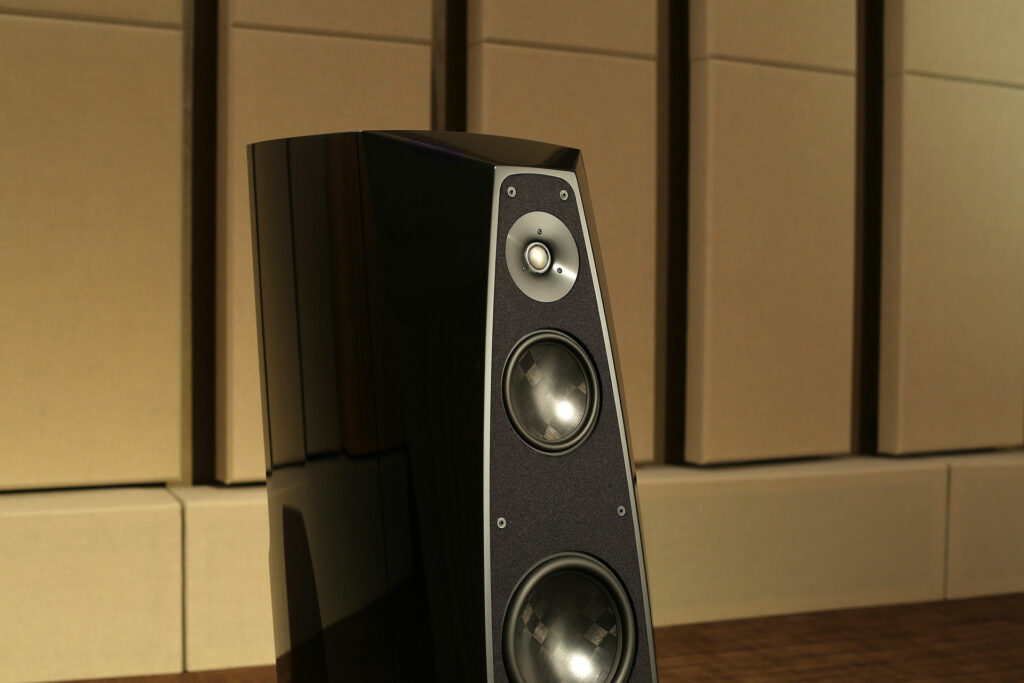
Final Thoughts on the Rockport Avior II Loudspeakers …
My time with the Rockport Avior II loudspeakers often left me at a loss for words, even having owned and reviewed many pairs of very respectable mainstream audiophile speakers in my career. The Rockport Avior II loudspeakers seem to contradict themselves in their capabilities. What I mean by this is that typically I find loudspeakers are either musical or revealing, forgiving or analytical, ying or yang, but rarely both. The Rockport Avior II speakers deliver on both fronts, which is a truly rare feat.
The Rockport Avior IIs are extremely revealing, yet at the same time sound quite relaxed and poised. The level of detail retrieval was just astounding compared to the best speakers in and above the $50,000 price point. Whether it was a cymbal, or a vocal, or a reflection from a wall, the Rockport Avior IIs let me hear deeper into the recording. Secondly, the Rockport Avior IIs have the rare ability to sound amazing, regardless of the quality of the material being played. For a speaker to sound great with audiophile quality recordings is expected at this level of spend. To sound just as good with poorly recorded music was an unexpected surprise.
The Rockport Avior II never had me reach for a remote to change the track or lower the volume. When listening at low volumes, after my four-year-old goes to bed, for example, the Avior IIs deliver me just as much detail, imaging and enjoyment as when I had the volume turned to 11.
The Rockport Avior IIs are some of the finest speakers I’ve had the pleasure to audition. I found myself digging through an endless variety of genres and performers, and was almost always rewarded with new surprises on material I know well. These speakers kept me up late at night, never wanting to turn the system off, and have become my new reference. Is there a stronger endorsement at the end of a review than writing a gigantic check? No – and I’ve never regretted the decision, as these are some fine loudspeakers.




Finally! A review with music I can relate to! The Rockports sound like a good buy for what they are.
Glad you enjoyed the review Wayne! What good is a speaker if it doesn’t sound good with the music we want to listen to even if the recording is less than perfect?! The Rockports had no problem with anything I threw at them, especially AC/DC. 🙂
I almost didn’t read this review thinking I probably don’t care about a speaker so far beyond my budget but I’m glad I did, I really enjoyed your review.
I don’t recall ever hearing Rockport but they will be on my radar to listen to if at Axpona. Your thoughts on the other similar brands mirror close to my own.
Thank you Bryan! I highly recommend you track down some Rockports to listen to if you are able. Even if they are outside your budget it’s great to get a sampling of all of the different presentations that loudspeakers offer. This helps you learn what’s important to your ears so you can make the right choice for your system.
You are a SUPER FAN thus you MUST read all of our reviews!!! 🙂
Josh, who runs Rockport, was the “chosen one” to run Transparent Audio (cables etc..) in Maine. He left to do this speaker project which is a BOLD CALL but that is what caught my attention with the brand.
Rockport speakers are rare, exotic and high performance. They are hand crafted and low volume thus expensive. So are Bugattis and Rolls Royce.
They are totally bad ass speakers.
I just wonder when the “audiophile elders” will get off my ass for allegedly NOT reviewing enough expensive stuff? We did a $57,000 CH Precision amp, Rockport speakers, Stenheim speakers, Estelon speakers, countless Pass Labs products, reference level Weiss DAC, Every Bricasti DAC. A $12,000 SACD player etc.. ALL IN 2024. I think the elders are just scared of value and change. We are not!!! 🙂
You have done a good job of reviewing higher end gear as well as the more affordable. Actually you just do an overall good mix, thinking of the SPL reviews, hitting a good variety of price points.
I also like the fact you present news and articles along with the reviews. You’ve become my go to.
The Magico M2s are currently $76,500 including the MPODs. (I own a pair).
Thanks for the correction!